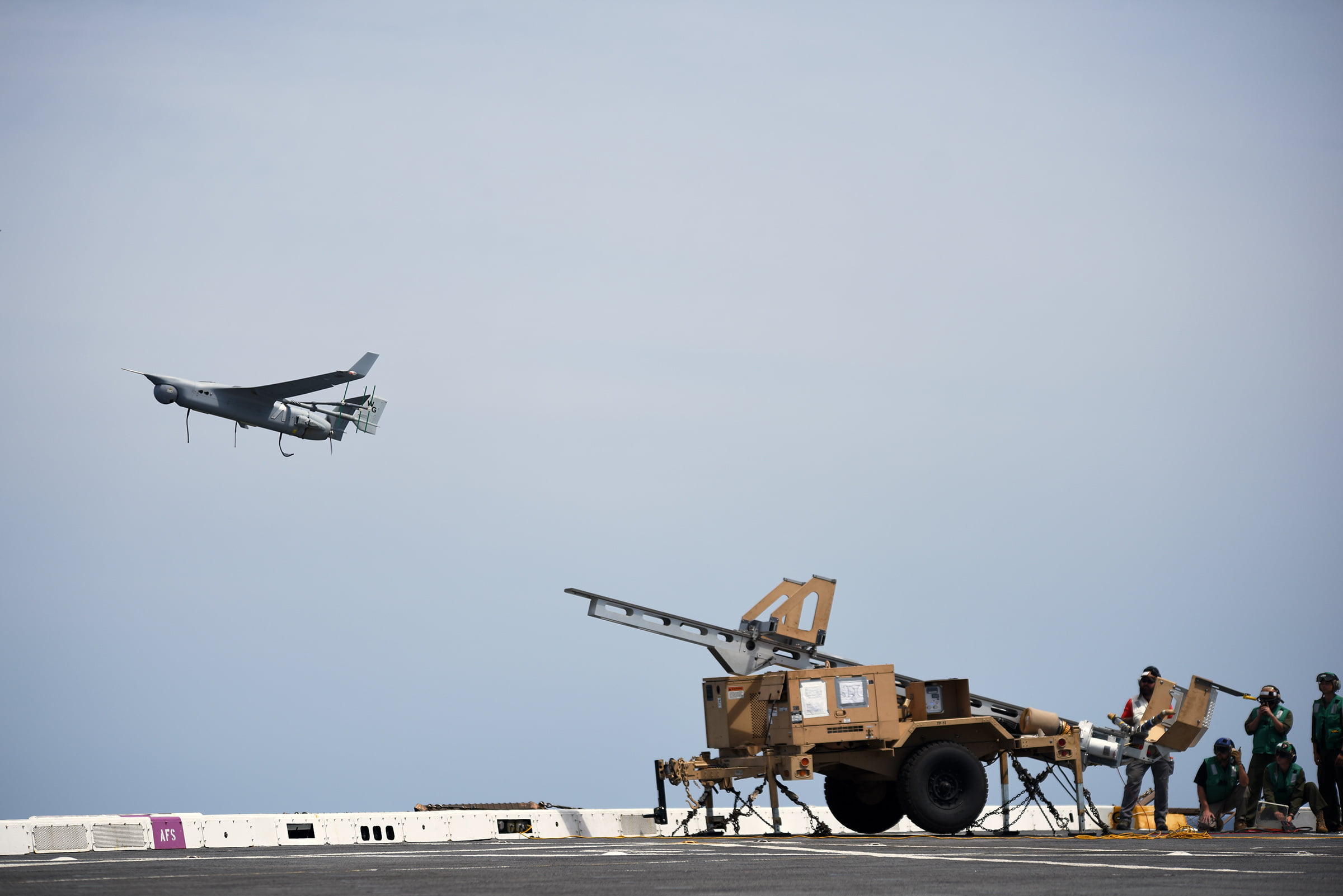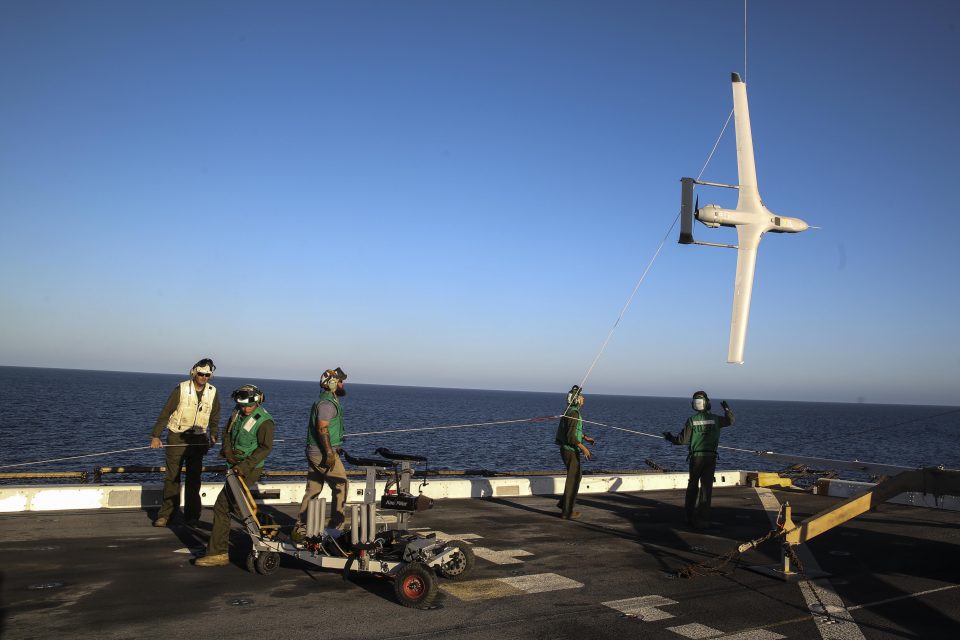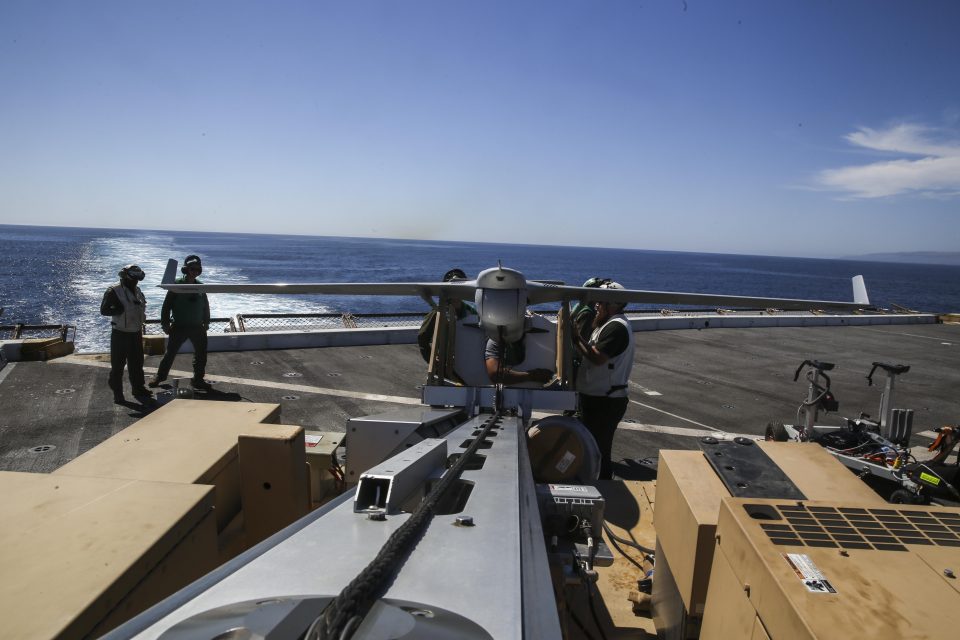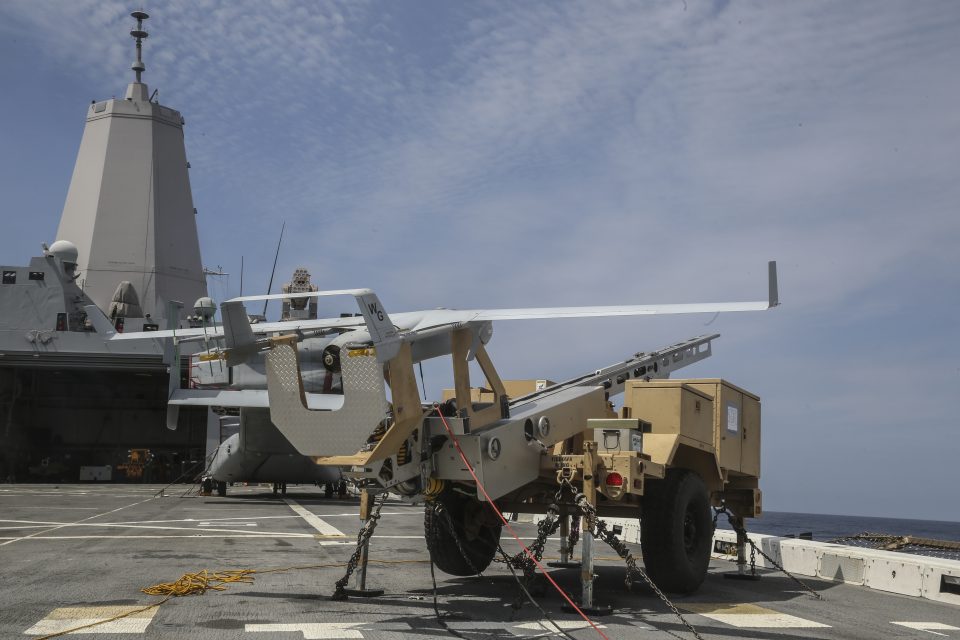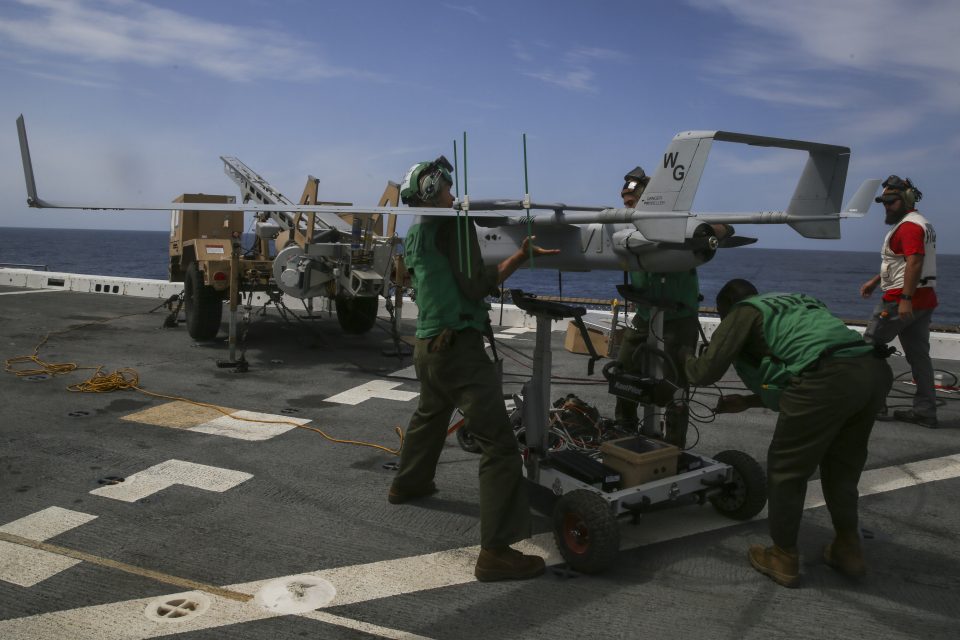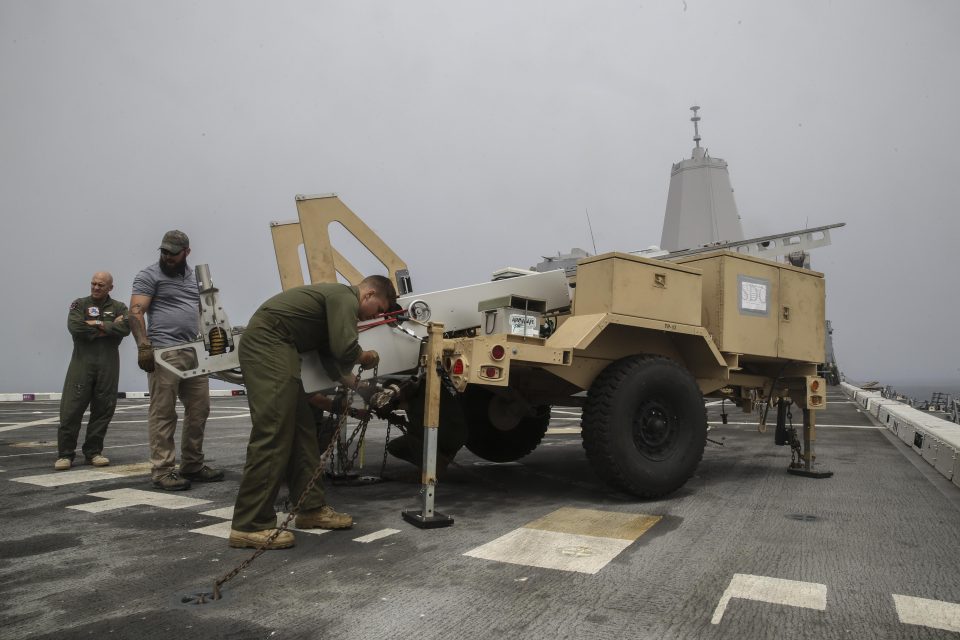2017-05-17 By Robbin Laird
President Trump has come to power at a time when a very flexible force able to insert from the sea and rapidly return to the sea has emerged.
This USN-USMC capability has migrated beyond the classic Amphibious Ready Group-Marine Expeditionary Unit (ARG-MEU) into a very flexible and lethal amphibious task force.
The evolving Marine Corps aviation assets, coupled with the reshaping of Marine Corps concepts of operations for conducting force insertion from the sea, are shaping a new capability and within that capability unmanned aerial assets are playing a key role.
One of the key architects of the Marine aviation revolution has been Lt. General (Retired) Trautman.
During his tenure as Deputy Commandant for Aviation, the Osprey began its first deployments to the Middle East, the H-1 Venom and Viper were introduced to the Fleet and the F-35B was coming to its initial fruition.
With the continued development of the CH-53E into the K and the addition of unmanned aviation, the mix of flying assets that would work with the Ground Combat Element to shape new MEU capabilities was put into motion.
I had a chance recently to talk with Lt. General (Retired) Trautman about the unmanned element and its role in the evolving way ahead for Marine Corps transformation.
Question: The UAVs going on ships now really had their origin in the land wars.
How did the process get started?
Lt. General (Retired) Trautman: It goes back to the time General Jim Conway was in Iraq with the 1st Marine Expeditionary Force and he found a little company that was making the Scan Eagle UAV.
Believe it or not, the Scan Eagle was being used for the Albacore fishing fleets up in the Pacific Northwest at the time.
In other words, Scan Eagle has a shipboard legacy already built right into it.
But, the Marines evolved the Scan Eagle principally as an asset for land based operations in Afghanistan and Iraq.
And, in recent years with the focus placed on returning to the sea it became obvious that a similar capability on board our amphibious task force would be quite useful.
That is what led us to make the selection of the RQ-21 Blackjack which is now deploying on our Marine Expeditionary Units and by all accounts it is doing quite well so far.
Question: It is very challenging to operate unmanned air systems onboard ships and could you discuss those challenges?
The Blackjack at Sea from SldInfo.com on Vimeo.
Lt. General (Retired) Trautman: Many people who have not spent a lot of time at sea really don’t grasp the inherent challenges that you have when you launch and recover from a sea base.
The Marines over the years, along with their partners in the US Navy, have built an aviation force that’s quite credible from the sea. F-35Bs, MV-22s, H-1s and the evolving CH-53K all come into the force at a very important time as our nation evolves into a better understanding of the value and proper use of the amphibious task force.
In parallel with those developments, we must figure out how to take advantage of unmanned aerial systems.
As we do that operationally, we at the same time have to experiment and learn and use systems from the sea in ways that cause us to understand what new systems we should procure in the coming decade as well.
In other words, the foundation for the future is being built with our experience on board our amphibious ships today as the new aviation assets marry up with the unmanned systems onboard our ships.
Question: And having the UASs onboard allows the Marine Corps commanders to sort out how best to use those assets in operations as well. How might they do that?
Lt. General (Retired) Trautman: If I’m a task force commander and I’m deployed somewhere around the globe, I want to be prepared to conduct operations at a moment’s notice when the mission dictates.
I also want to have the flexibility to conduct all of my sorties from the sea or if necessary transition to an expeditionary land base for short duration operations that make an impact on the enemy before quickly returning to sea.
I want unmanned aerial systems that enable me to do whatever I need to do in order to accomplish the mission.
That means I need range, speed, endurance, the ability to take off and land vertically, a wide range of payloads, non-proprietary payload “hooks,” and the best Size, Weight and Power (SWAP) advantage I can attain.
To do that, you have to think long and hard about the types of capabilities that you wish to procure.
Whether it’s classic UAS capabilities like intelligence surveillance and reconnaissance, the delivery of precision weapons, or electronic warfare, there are a whole host of missions that unmanned systems can do with the right payloads.
The key is to have those systems with me, use them and determine how to get the most effective use from them in the widely varied operations that an amphibious task force will pursue.
Question: When you were DCA you worked the decision to sunset the Prowler electronic warfare aircraft.
That clearly has an impact on the payloads which you want to have on a UAS as well?
Lt. General (Retired) Trautman: It does.
We made the decision in 2009 to sunset the Prowler a decade out in 2019.
We did that with our eyes wide open knowing that the F-35B would be coming into the force in a more robust way by that time.
There are inherent electronic warfare capabilities resident in the F-35 but our vision also included the need for unmanned aerial systems to proliferate in the battle space to round out the electronic warfare requirements that the force will have.
We’re in our infancy right now in developing those capabilities, but the first step in achieving something is to get started, and to put the capabilities in the hands of young men and women who are in the force and then evolve the capability in a way that makes sense.
I’m confident that we are on that trajectory with our unmanned aerial systems and the payloads that we will develop for those systems in the next few years.
Question: And the experience being gained now and in the next decade will clearly shape the way ahead not only for the amphibious task force but for the unmanned element. In other words, the approach is to experiment by operational use.
What happens next?
Lt. General (Retired) Trautman: The current Deputy Commandant for Aviation has been very prescient in laying out a requirement for a program called MUX (MAGTF Unmanned eXpeditionary UAS) which the current aviation plan says will be ready for initial operations in the 2025 time frame.
That platform, whatever it becomes, should have the capability to take off and land from the sea base, to take off and land from an expeditionary operating location ashore and deliver long range relatively high speed service to the fleet so that you can use that range and speed to your advantage.
It should also come in with adequate power and non-proprietary “hooks” so that future users can employ whatever payloads make the best sense for the force as it evolves.
This is a very exciting time for the development of unmanned systems in support of the amphibious task force and the Marine Corps.
Editor’s Note: The photos and videos highlight Blackjack training aboard the USS San Diego with the 15th MEU.
The Marines refined their launch and recovery procedures of the RQ-21A Blackjack during COMPTUEX in order to provide reconnaissance for the planning and execution of future missions.
Through a high degree of unit training, the 15th MEU forms a flexible sea-based Marine Air-Ground Task Force capable of mobilizing personnel and equipment to any corner of the globe.
For Todd Miller’s look at the preparation of the 15th MEU see the following:
The 15th MEU & America ARG Take Next Steps in Deployment Preparation


